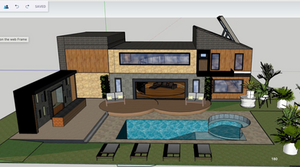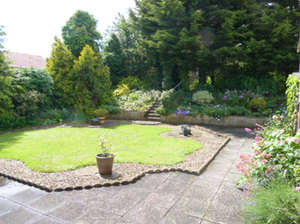top of page
Portfolio
Welcome to my portfolio – a curated collection of creative projects spanning photography, digital design, brand guide development, and landscape work. Here, you’ll find real examples of my skills, from captivating visuals and cohesive brand identities to engaging digital content and striking landscape compositions. Each project reflects my attention to detail, creative vision, and passion for impactful design.
I’m now looking to take the next step through a hands-on design or print apprenticeship, where I can continue learning, contribute to a forward-thinking creative team, and grow within the industry.


Website Design
During my Web Design course at Loughborough College, I was tasked with building a fully functional Wix website to professionally showcase my creative work. As part of the course, I learned the basics of web layout, branding fundamentals, and user experience design. While this gave me a solid foundation, I chose to take the skills further after graduating by using Wix to create a refined online portfolio specifically tailored to an apprenticeship opportunity. Between May and July 2025, I developed and customised the website to feature case studies across my digital design, branding projects, and photography, all presented within a cohesive and professional structure. Each project includes a clear explanation of my role, the tools I used (such as Adobe Illustrator, InDesign, Lightroom, and Wix), and insight into my creative process. The result is a clean, mobile-responsive platform that highlights my strongest work and encourages user interaction—prioritising visual clarity, accessibility, and smooth navigation.


Landscape Photography
I developed a real passion for landscape photography during my time at college, where I had the opportunity to experiment with different techniques and develop my own style. I enjoyed being outdoors, capturing the mood of a place through thoughtful compositions, natural light, and patiently waiting for the right moment to shoot. This experience helped me become more confident with my camera and how to frame images that tell a story.
As I practised more, I also grew to enjoy the editing side of photography using Adobe Lightroom. This tool allowed me to enhance colours, textures, and lighting to make my photos feel more atmospheric and true to my vision. Editing became just as important as taking the shot because it helped me bring out the emotions I felt while shooting. Landscape photography is an area I continue to explore and improve in my own time.
As I practised more, I also grew to enjoy the editing side of photography using Adobe Lightroom. This tool allowed me to enhance colours, textures, and lighting to make my photos feel more atmospheric and true to my vision. Editing became just as important as taking the shot because it helped me bring out the emotions I felt while shooting. Landscape photography is an area I continue to explore and improve in my own time.


Studio Photography
Studio photography is another area I’ve grown to love, especially through the hands-on experience I gained during my time at college. I had the opportunity to explore different techniques by working in a controlled studio environment, where I learned how to manage lighting setups, experiment with various backdrops, and direct subjects to create strong, impactful images. These sessions taught me the importance of attention to detail and how subtle changes in lighting or composition can completely transform a shot. In post-production, I used Adobe Lightroom to improve the look of my studio photos—tweaking colours, adjusting textures, and balancing shadows and highlights to make each image stand out. While doing this, I didn’t just learn how to edit technically—I also started to develop a better creative eye and got a feel for what makes an image really work. Working in the studio gave me a good mix of hands-on experience and creative freedom, helping me understand how to take an idea and turn it into a professional-looking photo from start to finish.


Digital Design 3D Model
Working on my 3D SketchUp model for a luxury apartment mock-up was a challenging but rewarding part of my college project. At first, I found the software quite tricky to get used to, but after spending time exploring the tools, watching tutorials, and testing things out, I started to really enjoy the process. Once I got the hang of it, it was exciting to see my ideas take shape in a realistic 3D environment. I learned how to think more spatially and gained a better understanding of how different elements—like layout, furniture placement, lighting, and textures—work together to create a strong interior design.
The project helped me develop patience and attention to detail, as even small changes could make a big difference to the final outcome. I also became more confident in presenting and explaining my design choices visually. It felt great to complete something that looked polished and professional, and it gave me a real sense of achievement. Overall, it opened my eyes to the possibilities of 3D design, and it’s something I’d definitely like to keep exploring in future projects.
The project helped me develop patience and attention to detail, as even small changes could make a big difference to the final outcome. I also became more confident in presenting and explaining my design choices visually. It felt great to complete something that looked polished and professional, and it gave me a real sense of achievement. Overall, it opened my eyes to the possibilities of 3D design, and it’s something I’d definitely like to keep exploring in future projects.


Brand Guide
Creating a digital brand guide using Adobe InDesign was one of the most enjoyable projects I worked on at college. It sparked a real interest in digital design and quickly became more exciting to me than photography. I learned how to build a cohesive visual identity using typography, colour, layout, and brand consistency. It was my first experience creating a brand from scratch and showed me how important consistent design is across different materials.
The most rewarding part was seeing everything come together to look polished and professional. I became more confident with tools like grids, spacing, and layout, and realised I enjoy the structure behind design as much as the creative side. Since then, I’ve kept exploring digital design in my own time, trying new tools and projects to build my skills. This project motivated me to push my creativity and think carefully about every design choice.
The most rewarding part was seeing everything come together to look polished and professional. I became more confident with tools like grids, spacing, and layout, and realised I enjoy the structure behind design as much as the creative side. Since then, I’ve kept exploring digital design in my own time, trying new tools and projects to build my skills. This project motivated me to push my creativity and think carefully about every design choice.


Landscape Design Project (Hands‑On Renovation Work)
From a young age, I helped my mum with residential landscape renovations, where we worked together to transform outdoor spaces into safer, more modern environments for our family. We chose plants and materials, used tools like pickaxes to level out uneven ground, and even removed a small hill to create a flatter, more usable area. This made the garden feel more open and child-friendly, especially for my younger siblings, who needed a safer place to play and explore.
Although the projects weren’t fully completed, the changes we made gave the gardens a much more spacious and refreshed feel. We focused on improving the layout and functionality while keeping things simple and low-maintenance. These hands-on experiences taught me the value of practical design and how small improvements can make a big impact over time. It also shaped the way I approach visual design today—blending function with creativity and always considering how a design will work in the real world, not just how it looks.
Although the projects weren’t fully completed, the changes we made gave the gardens a much more spacious and refreshed feel. We focused on improving the layout and functionality while keeping things simple and low-maintenance. These hands-on experiences taught me the value of practical design and how small improvements can make a big impact over time. It also shaped the way I approach visual design today—blending function with creativity and always considering how a design will work in the real world, not just how it looks.
bottom of page
